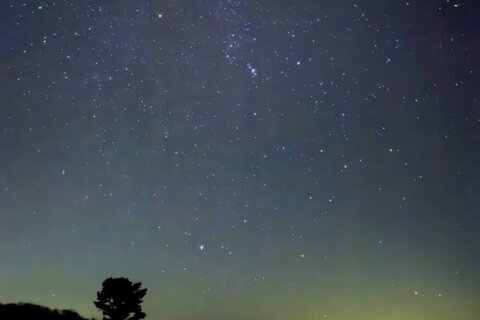Did you know that Halloween is an astronomical holiday?
Oct. 31 is the traditional half way point between the Autumnal Equinox and the Winter Solstice. The Sun gets lower in the sky each day at local noon and the hours of darkness continue to increase with the indicators of Fall all around us.
After sunset on “Astroween,” brilliant Venus greets our view low in the Southwest … you can’t miss it. Moving further to the left you will see another bright “star,” the brightest after Venus. This is the planet Jupiter. Just to the right of Jupiter over a fist width to the right is the planet Saturn. Unlike last Halloween, the Moon is out of the sky for evening Trick or Treaters.
If you are able to find a dark sky site, the Milky Way is visible in the Southwest and arches overhead with the Summer Triangle. Shenandoah National Park is a great place to see the glorious Milky Way. You can get updates on the Park’s status at their website.
While out and about there may be a chance to see the Northern Lights or Aurora, depending on your location and if space weather conditions are right. The Sun had a big solar flare this week that may result in a sky show for some. Check the NOAA Aurora Forecast after sunset at your location to see if there is a chance for seeing them.
As an extra Halloween treat, be sure to enjoy this marvelous collection of ghoulish posters courtesy of NASA and scary space sounds.
To be a bit more astro-spooky, check out the story of the “Demon Star” and find it for yourself in the Northeastern sky.
For you early risers, bright Mercury is in the East- Southeast and the constellations of winter are visible in the South and overhead.
Enjoy Astroween and please vote in Virginia, get COVID-19 vaccinated, a flu shot, wear a mask and social distance to be safe and healthy as we wind down 2021.
Follow Greg Redfern on Twitter @skyguyinva and his daily blog to keep up with the latest news in astronomy and space exploration. You can email Greg at skyguyinva@gmail.com.







